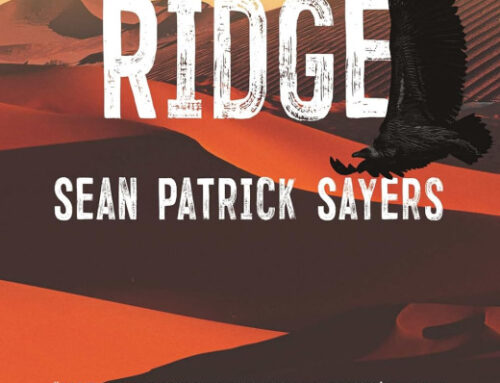
Rebellious warriors defy power and the odds in Dissonance Volume II: Reckoning by Aaron Ryan, a hellish but hopeful vision of humanity’s future.
A raw and hard-nosed thrill from start to finish, this post-apocalyptic thriller features flesh-eating aliens with psychic paralysis weapons, and picks right up where the first volume left off – with Sergeant Cameron Shipley seething behind bars. He is a hurt and haunted protagonist, betrayed by the man he considered a father, reeling over the needless death of his beloved brother, and overcome with a desire for revenge against one of the most powerful humans on the planet.
Any hope of retribution is overshadowed by the overwhelming alien threat, so his skills are tapped for a new mission, along with his loyal crew – companions who have become true comrades. Setting the largest trap in the history of humanity takes organization and clean-up crews, who need to be trained, but the seemingly straightforward mission is anything but. Plagued again by betrayal and shadowy secrets held by those in control of humanity’s fate, Cameron must once again put his loyalties, and life, on the line.
The relationship between Cam and Ally is a powerful core of the story, with far more nuance than the average superficial heroics of most military thrillers; readers see their mutual support of each other, along with timely wisdom. Themes of grief, trauma, forgiveness, trust, and healing are fleshed out in subtle and believable ways in the natural course of the novel.
There is genuine compassion and concern between all the crew mates; entire scenes are dedicated to emotionally vulnerable conversations in the midst of a species-ending siege and a Hail Mary counteroffensive to push back at extinction. Achieving that balance of emotionality and plot momentum is what elevates this book above so many others in the genre, which too often fall back on gratuitous action sequences or archetypal characters cut from familiar genre tropes.
The narrative style is informal and engaging, switching from narration and internal monologue to personal asides and backstory or exposition. While this makes for a fast-flowing read, it can also make the prose difficult to parse in terms of importance. A stream of consciousness narrative can be immersive, but should reduce redundancy and distracting tangents, especially in scenes with limited dialogue.
Additionally, there is an overuse of italics for accentuation in the dialogue and narration, made more confusing by the frequent internally spoken lines, which are also formatted in italics. It makes the writing feel as though the language itself can’t properly convey intention. Similarly, Ryan needs to trust his readers to understand the significance of dialogue without over-explanation, which often leaves little room for readers’ interpretation; explaining authorial intent in such blunt ways is common in YA fiction, but still more could be left to the imagination without losing the thread of the story.
Despite minor issues with execution, the plot is gripping, the players are potent, and the climax will have readers quickly reaching for the final piece of this gripping military trilogy.
Book Links
STAR RATING
Design
Content
Editing
Get an Editorial Review | Get Amazon Sales & Reviews | Get Edited | Get Beta Readers | Enter the SPR Book Awards | Other Marketing Services























Leave A Comment